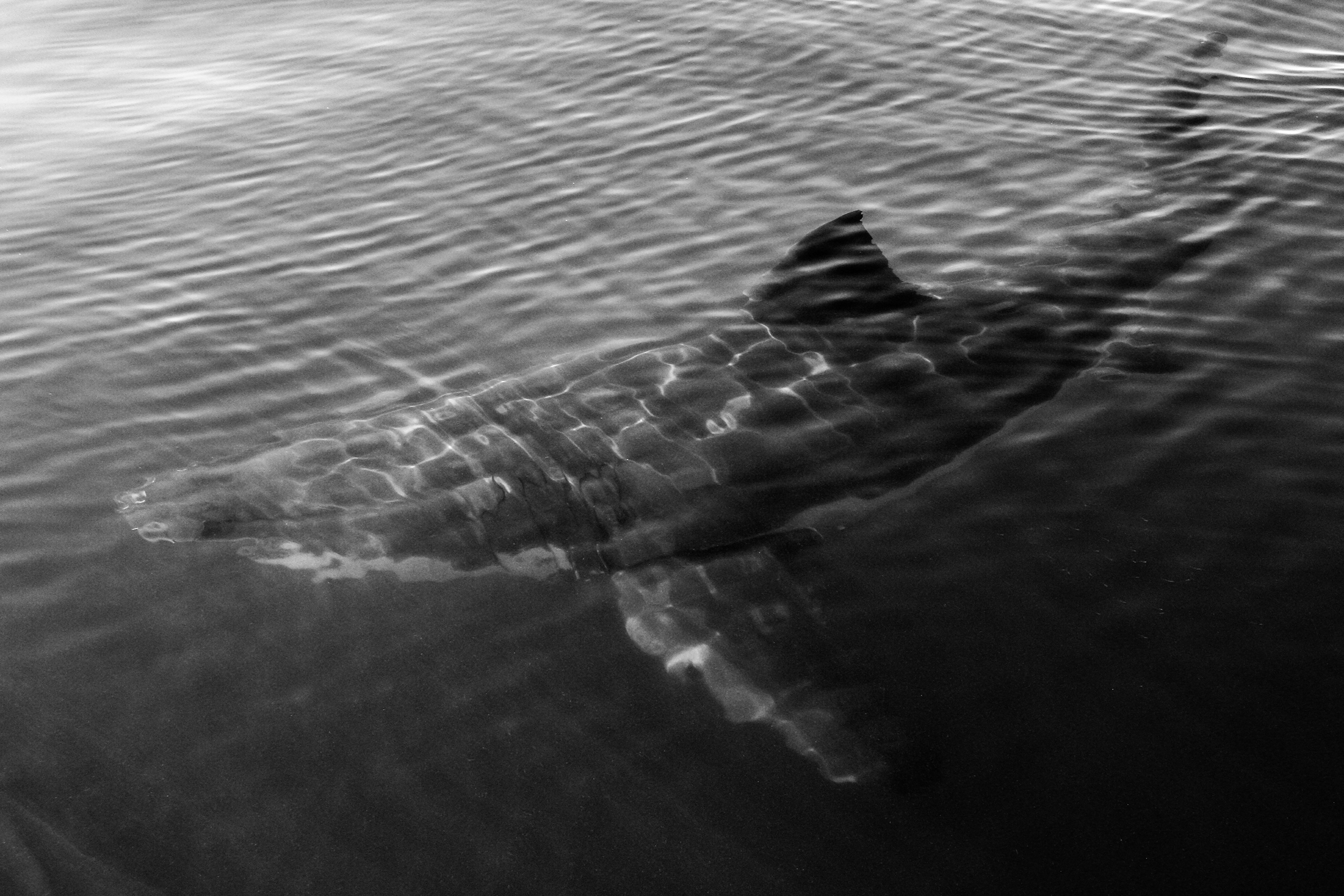Black and (Great) White
The First Time I Came Face to Face With the Ocean's Apex Predator
Great White Sharks, love them or hate them, are at the top of the marine food chain for a good reason. Unchanged in design for millions of years they are the perfect predator and one whose name sends shivers down many a spine. Demonized by the media as killing machines that fear is then passed on to the populace in general. Chances are the majority pf people on Earth will never encounter a Great White Shark in the regular course of their lives, they are simply not destined to. If on the other hand you, like me, get to spend a part of your life working for the remote imaging department at National Geographic as a field producer and cameraman then it's a foregone conclusion. I first encountered these majestic animals during a project in South Africa, to a place called False Bay. It's that spot where Great White Sharks fly in search for their meals!

She was sleek, she was awesome. My first ever Great White Shark, a 9ft / 3m adolescent young lady.
I had been tasked by the Remote Imaging Department at National Geographic Television to head to South Africa for some six weeks. My job was to place their animal borne imaging device onto the dorsal fins of Great White Sharks! Haha, no problem... With thoughts of missing fingers, or worse, I met the group of support personnel, those folks with way too many more brain cells than I who had devised a pretty unique robotic arm with which to deploy the cameras. "Phew, I get to keep my fingers".
On the days we could get out to sea, given this area of Southern Africa is prone to changes in sea conditions that go from Millpond to Maelstrom in literally the same amount of time it takes to say it, our tasking was pretty simple. Get to the main study area by 0500 way before sunrise to start chumming the waters. There was also a natural attractant to the sharks at this location, around 20,000 bite sized Cape Fur Seals who also happened to be in the pupping season. Yum Yum! Sadly we were also downwind of the aptly named rocky outcrop that is Seal Island. Now I don't know if you've ever smelled the byproduct of a 100% fish based diet but boy can I tell you, it ain't rosy! At least it took away the stench of the chum we were ladling out.
It doesn't take long. One of the research assistant made the call, "Shark in the chum slick". This would be my first ever encounter with this infamous creature. I turned. She was sleek, silent and imposing. Gliding past with the tip of her dorsal fin literally millimeters below the surface she didn't create a ripple. Just cruising past to see what it was sending out this potential food source. The main scientist we were working with on this gig estimated the size to be around 9ft based on the formula derived from the distance between the dorsal and upper tail fin. As we were not prepped for this first arrival all I had was my old Canon DSLR to take an image of the encounter.
For the rest of the trip we managed to get out around ten different times to place cameras on the sharks. Over that time I was lucky enough to place cameras on seventeen different Great White Sharks. We would recuperate the cameras that popped off the sharks at a predetermined time that was programmed into the computer operated clamp system holding the cameras in place with the use of radio tracking signals. Our efforts and the media it collected in turn helped both the scientists and science in general get a better understanding of how the sharks, predominantly pregnant females, were predating on their favored food item during pregnancy. It was indeed and incredible experience one that I will divulge in greater detail sometime in the future, and one I will cherish until the end of my days.
"The facts are clear. Our oceans are a mess"
Antonio Gutteres
About the Author
Internationally recognized as a provider of quality mixed media Mark Thorpe is always on the search for captivating content.

Photographer / Cameraman
Mark Thorpe
Emmy Award Winning wildlife cameraman and Internationally published landscape photographer Mark Thorpe has been an adventurer since he could walk! Spending 17yrs as an Underwater Cameraman at the start of his imaging career the highlight of which was being contracted to work with National Geographic. In that role as a field producer and cameraman he's been privy to a mixed bag of hair raising adventures. For some reason he was always selected for projects relating to large toothed marine predators such as Great White and Tiger Sharks, Sperm Whales and Fur Seals. Additionally he has also been active within Southern Africa on terrestrial projects dealing with a wide array of iconic wildlife.
Currently based in Okinawa, Japan he's always on the lookout for his next big adventure. He shares his exploits online with a totally organic social audience in excess of 200,000. Sponsored by a number of photographic industry manufacturers he is constantly scouring the islands for captivating landscape and oceanscape compositions. Videography wise he continues to create short photographic tutorial videos as well as creating content about the diversity of wildlife within Okinawa and the Ryukyu Islands of Southern Japan.
Mark has just created a Patreon channel where he's hoping to raise an audience of supporters who through small monthly shows of appreciation will allow him to concentrate on the creation of a wildlife and landscape imaging themed YouTube Channel. If you feel that is something you'd like to support you can visit his Patreon Channel for more information.
